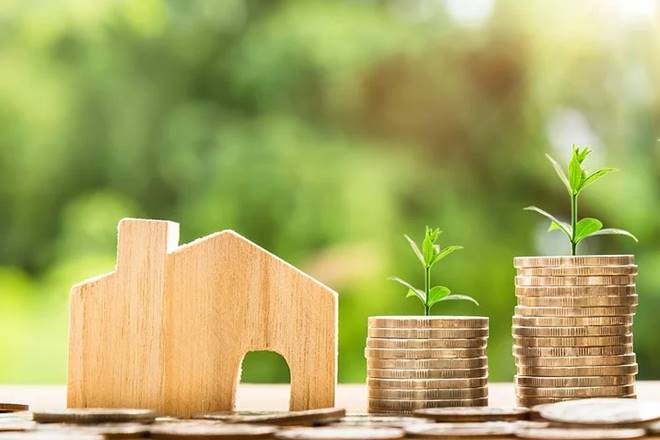A specialized type of mortgage called green home loans encourages environmentally-friendly housing choices.
How familiar are we with green home loans? To some, it’s a fresh idea sparking both wonder and interest. Yet for many prospective investors in today’s real estate, the concept of opting for a green home loan offers incentives to select environmentally-friendly homes.
Green home loans acknowledge and incentivize the inclusion of eco-friendly features in a property. They are designed to specifically finance the integration of these features into homes.
One of the benefits of pursuing these loans is that they enable buyers to finance energy-efficient home improvements—like renewable energy systems and energy-efficient appliances—alongside their mortgage payments when purchasing a home.
Read More: RBI Likely To Keep Interest Rate Unchanged At 6.5 Per Cent, Say Experts
Prospects for green home loans in India
The housing sector is increasingly embracing sustainable practices, driven by increased awareness of environmental conservation. India ranks third globally, following China and Canada, with over 752 LEED-certified (Leadership in Energy and Environmental Design) buildings. This ranking comes from the annual list of the top ten countries and regions for LEED certification, released by the US Green Building Council (USGBC).
The growing environmental awareness is a primary catalyst for the surge in green home loans in India. Additionally, significant long-term savings on utility bills resulting from enhanced energy and water efficiency serve as a major incentive. According to The Energy and Resources Institute (TERI), adopting green building practices in urban India could save an impressive 8,400 megawatts of electricity annually, enough to meet the lighting needs of 550,000 homes each year. As people seek more ways to save money, green homes provide a sustainable solution.
Factors that explain why this trend is gaining momentum:
- Policy initiatives have a significant impact that cannot be overlooked. Initiatives such as the Pradhan Mantri Awas Yojana (PMAY), launched by the Indian government, aim to promote affordable housing while emphasizing sustainability. This has moved many people to adopt green building practices.
- Some state governments in India offer financial incentives that complement the benefits of green home loans, enhancing their appeal to potential homebuyers even further. Furthermore, subsidies can mitigate the initial expenses associated with green features such as solar panels or energy-efficient appliances. This makes green homes more affordable and alleviates the upfront financial burden on homebuyers.
- Tax sops on these loans are quite appealing. Certain states provide tax advantages on property or income taxes for green homes. This results in long-term savings for homeowners and encourages them to opt for sustainable choices.
Read More: HDFC, ICICI, IDFC FIRST Bank –New Credit Card, Debit Card Rules That Will Impact Consumers
How are these loans different from regular home loans?
There are fundamental differences between green home loans and conventional home loans. These include:
Loan eligibility criteria: Your income, down payment, and creditworthiness are the main determinants of your eligibility for a conventional home loan. Generally, there are no environmental feature-related requirements for the property. In contrast, green home loans usually have stricter requirements for qualifying. It might be necessary to install specific green features or ensure that the property meets energy efficiency standards before it can be bought or renovated. Lenders may evaluate your financial status and creditworthiness as well, but the property’s environmental qualifications are frequently given more weight.
Factors influencing interest rates: Numerous factors including the loan term, loan-to-value ratio (LTV), and your creditworthiness, determine interest rates. You can usually get a lower interest rate if you have a higher credit score and a lower LTV ratio.
On the other hand, green home loans may offer lower interest rates than regular home loans, serving as an incentive for selecting sustainable properties. This is because a green home, with anticipated lower utility costs, presents a reduced risk for the lender.
Purpose of the loan: Conventional loans are typically used to finance the purchase of a new home or to refinance an existing one. There are no restrictions on how the funds can be utilized. On the contrary, green home loans can be used to purchase properties equipped with green features such as solar panels or energy-efficient appliances. Additionally, these loans can finance upgrades to enhance the energy efficiency of your current home, including improvements like insulation, windows, or appliances.
Read More: Rupee vs Dollar: Indian currency slips to all-time low of 83.80 against US dollar in early trade
Challenges green homes face in India
Despite the long-term financial advantages, affordability remains a significant challenge for green homes. Solar panels, energy-efficient appliances, and improved insulation are examples of green features that usually involve higher initial costs than traditional alternatives.
Many individuals lack the down payment or financial resources needed to offset the cost difference between conventional and green homes, even with the availability of green home loans. Furthermore, awareness is a significant issue. Not everyone is familiar with green home loans or the advantages of green homes. Enhancing public awareness and education will be essential for broader adoption in India.
Wrapping Up
India’s vast and expanding housing market shows a considerable demand for affordable homes. In the future, green home loans can meet this demand by financing eco-friendly features in affordable housing options. Given the increasing importance of sustainability among homebuyers, these loans can effectively transform the way they live in their homes.





































